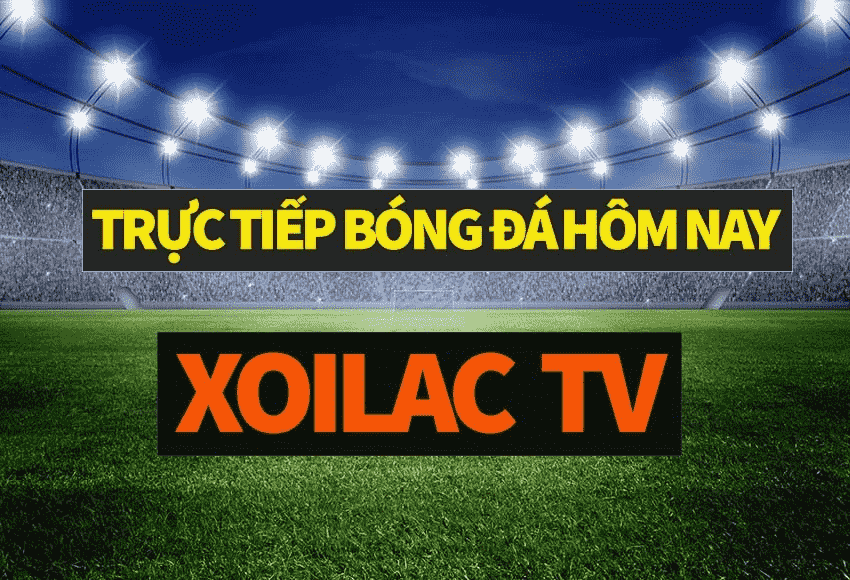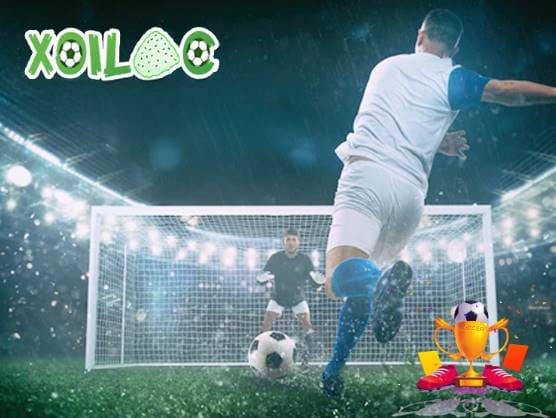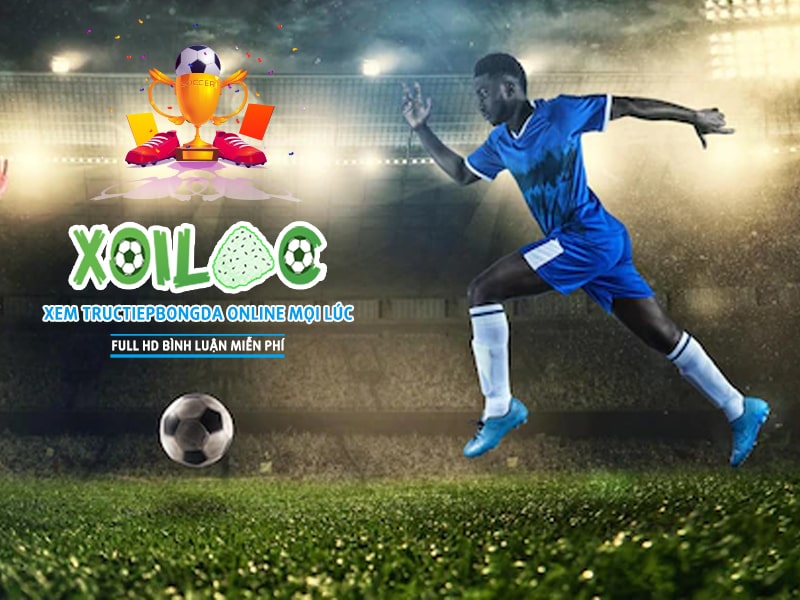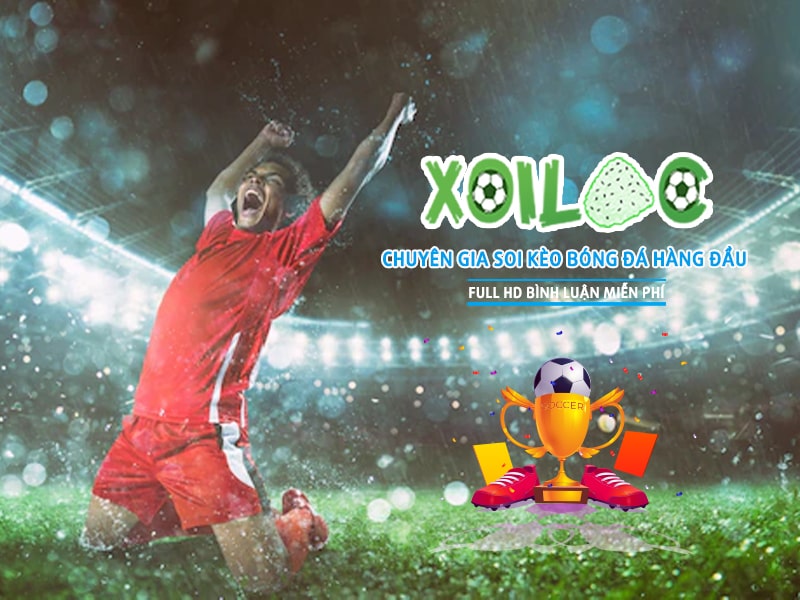Xoilac TV – Xem Trực Tiếp Bóng Đá FULL HD 90PHUT TTBD
Nếu anh em nào đang tìm kiếm một kênh xem bóng đá miễn phí cùng hàng ngàn tin tức thể thao online nóng hổi thì hãy đến với Xoilac. Nơi bạn được thỏa mãn nhu cầu về những trận bóng đá yêu thích đỉnh cao mọi lúc mọi nơi. Để fan cứng của bộ môn túc này yên tâm hơn khi truy cập thì hãy tham khảo thông tin sau đây.

Đôi nét về chuyên trang bóng đá trực tiếp Xoilac
Xôi Lạc TV được đông đảo anh em hâm mộ bộ môn túc cầu biết đến là một trang web chuyên cung cấp các dịch vụ về bóng đá. Trong đó, phải kể đến link phát trực tiếp bóng đá, soi kèo cùng hàng ngàn tin tức hot về bộ môn này. Ngoài cái tên Xôi Lạc TV thì mọi người còn biết đến những cái tên như XoilacTV, Xoi Lac TV, Xoilac, Xoilac net… Sở dĩ có tên gọi này là do các dịch vụ, tính năng chuyên trang cung cấp không khác gì một chiếc tivi thu nhỏ với đầy đủ tiện ích hiện đại hấp dẫn anh em. Hội tụ hàng trăm giải đấu bóng đá lớn, nhỏ khác nhau được phát sóng free trên mọi nền tảng.
Ngoài ra, chuyên trang này còn là nơi cập nhật chi tiết tin tức về các đội tuyển, trận đấu mới mẻ, nhanh chóng. Các chuyên gia hàng đầu liên tục đăng tải các bài viết nhận định, hướng dẫn soi kèo chuẩn 90%. Đầu tư mạnh mẽ công nghệ thống kê lịch thi đấu, kết quả, bảng xếp hạng và tỷ lệ cược tại những nhà cái uy tín.
Với thế giới bóng đá đa dạng thông tin anh em tham gia Xoilac sẽ nhận được rất rất nhiều bất ngờ. Có lẽ đây chính là những yếu tố đã giúp kênh không ngừng bùng nổ ngay từ khi xuất hiện và ngày càng được anh em đam mê trái bóng tròn tiếp cận.
Xem trực tiếp bóng đá trọn vẹn hơn cùng Xoi Lac TV

Xoilac vượt qua nhiều đối thủ và nhanh chóng khẳng định vị thế của mình trên “chiến trường” bóng đá trực tuyến nhờ vào những điểm nổi bật sau. Từ đó mang đến cho khán giả những cảm xúc xem bóng đá trọn vẹn nhất:
Phát sóng bóng đá trực tiếp liền mạch
Xoilac TV ứng dụng công nghệ livestream đỉnh cao về trận đấu bóng đá đảm bảo chất lượng video luôn ở mức tốt nhất. Từ đó, trận đấu dễ dàng phát lại tự động thông qua băng thông tích hợp sẵn mang đến cho khán giả những trải nghiệm tuyệt vời hơn ngay khi đã kết nối với Internet.
Trình phát sóng video chất lượng full HD sẽ mang đến cho khán giả vô vàn trải nghiệm giải trí cực kỳ liền mạch. Tuyệt đối không gây gián đoạn đứt mạch cảm xúc và luôn luôn mở ra những giây phút trải nghiệm bóng đá bùng nổ. Đây chính là thế mạnh nổi bật mà Xoilac TV vẫn đang cố gắng hoàn thiện mỗi ngày.
Giao diện web thân thiện, khoa học
Giao diện của Xoilac live được các chuyên gia bố trí thân thiện, tối ưu hóa mọi tính năng. Nhờ đó mà giảm thiểu thành công độ phức tạp cũng như chậm trễ khi người xem truy cập. Mọi phản hồi về yêu cầu khán giả đều cực kỳ nhanh chóng, đề xuất tự động một cách thông minh mang đến những trải nghiệm giải trí tuyệt vời nhất.
Nhiệt huyết, thăng hoa với đội ngũ BLV
Khác hoàn toàn so với những chuyên kênh xem bóng đá trực tiếp khác, Xoilac TV là nơi hội tụ của rất nhiều các BLV Thể thao nhiệt huyết, máu lửa nhất. Điều này cũng chứng minh được lý do vì sao, chuyên trang này lại “níu giữ” được nhiều fan m đam mê đá banh đến như thế.
Nếu theo dõi kênh Xoilac TV mỗi ngày bạn không chỉ được xem Livestream bóng đá chất lượng đỉnh cao mà còn có cơ hội “theo chân” BLV. Fan hâm mộ tận hưởng trọn vẹn những pha đánh bóng đẹp mắt cùng các khoảnh khắc có 102 trong trận đấu đích thực. Hoạt động vì mục tiêu công bằng, cảm xúc và vui nhộn đó là những gì đội ngũ chuyên gia bóng đá tại Xoilac TV đang thực hiện.
Xem trực tuyến bóng đá không lo mất tiền
Xoilac hoạt động phi lợi nhuận nên khi có nhu cầu xem bóng đá, các bạn sẽ không cần phải lo đến tiền. Với những giải đấu lớn hàng đầu mang tầm quốc tế, chúng tôi cũng đã mua bản quyền đầy đủ. Ngoài ra, anh em khi truy cập các link xem phát sóng bóng đá trực tiếp sẽ không phải lo lắng đến tính pháp luật, độ an toàn.
Xoilac cũng cung cấp hệ thống giải đấu vô cùng đa dạng, phong phú nhất để phục vụ cho mọi nhu cầu của người xem. Do đó, việc được xem miễn phí các trận cầu nảy lửa là quá hời, mọi người còn ngần ngại gì mà không nhanh tay truy cập vào trang Xôi Lạc TV.
Xoilac TV nơi hội tụ hàng loạt giải đấu bóng đá đỉnh cao

Đến với Xoilac TV, chắc chắn anh em sẽ mãn nhãn trước những giây phút bùng nổ bóng đá không giới hạn. Bóng đá trực tiếp phát sóng hàng loạt các giải đấu có sức ảnh hưởng mạnh mẽ nhất hiện nay. Bao gồm:
- Premier League: Một trong những giải đấu dành riêng cho các đội tuyển thuộc nước Anh tham gia ‘chinh chiến” với nhau. Vì thế ngay tại Xoilac cũng phát sóng trực tiếp bóng đá Ngoại Hạng Anh để đáp ứng nhu cầu xem đông đảo của fan.
- La Liga: Giải đấu hàng đầu trong hệ thống bóng đá Tây Ban Nha và được quản lý bởi La Liga. Tổ chức thể thao chuyên nghiệp của Tây Ban Nha. Giải đấu này chỉ cho phép các câu lạc bộ bóng đá tại đây tham gia, có sự cạnh tranh mạnh mẽ như Real Madrid, Barcelona, Atlético Madrid….
- World Cup: Giải đấu đã quá quen thuộc, không còn quá xa lạ với các fan hâm mộ bóng đá. Tại đây tất cả các đội tuyển tham gia đều là những siêu sao hàng đầu nên diễn ra nhiều trận đấu hấp dẫn, kịch tính.
- Serie A: Nổi đình nổi đám là giải đấu chuyên nghiệp dành cho các câu lạc bộ, đội tuyển thuộc nước Ý. Những cuộc tranh tài đối đầu trong giải đấu này tại chuyên trang Xoilac net cũng nhận được nhiều sự quan tâm lớn từ phía fan hâm mộ.
Ngoài ra, Xoilac cũng phát sóng giải bóng đá khác như trực tiếp bóng đá AFFCUP, Cup C1, Bundesliga, Euro, Copa America, V-League,…
Xoilac tv tích hợp những tính năng nổi trội nào?

Để tạo nên sự khác biệt mới mẻ nhất cho thương hiệu Xoilac đã không chỉ làm mới các ưu điểm. Ngay cả những tính năng tại đây cũng được xây dựng chuyên nghiệp hơn tạo ra sự thuận tiện cho người sử dụng. Vậy hiện nay chuyên trang này đang sở hữu những tính năng nổi bật nào?
Bảng xếp hạng các CLB
Bảng xếp hạng được coi là một trong tính năng hot nhất được Xoilac TV cập nhật thường xuyên ngay khi trận đấu kết thúc, vị trí trên thay đổi. Tại đây các chuyên gia sẽ thông kê chi tiết thứ hạng cho từng giải bóng hàng đầu thế giới.
Với tính năng này, khán giả sẽ dễ dàng nắm bắt được các thông tin về thành tích thứ hạng của đội tuyển mình yêu thích. Đi kèm với đó là các thông tin như tên đội tuyển, tổng điểm, kết quả thi đấu, kết quả năm trận gần nhất…Đặc biệt, tính năng này cung cấp dữ liệu tối ưu cho người xem để họ có thể tham gia vào hoạt động soi kèo bóng đá, dự đoán kết quả, thảo luận về trận đấu với bạn bè.
Tính năng lịch bóng đá
Đối với các fan có tình yêu bất diệt với bóng đá, lại không có nhiều thời gian rảnh rỗi hoặc trí nhớ không tốt thì có thể tham gia vào chuyên mục lịch bóng đá. Việc tham khảo chuyên mục này sẽ giúp bạn nắm được thời gian đội bóng thi đấu trước 7 ngày.
Xoi Lac TV còn cung cấp một cái nhìn tổng thể về lịch thi đấu bóng đá từ các giải đấu lớn và nhỏ, từ các trận đấu quốc nội đến quốc tế. Chính ưu điểm này đã giúp fan hâm mộ lên kế hoạch tận hưởng những khoảnh khắc đỉnh cao mà không lo bị bỏ lỡ.
Tính năng tỷ lệ kèo bóng đá trực tiếp
Đây luôn được xem là chuyên mục được dân cược quan tâm nhất. Tham gia kênh bạn sẽ cập nhất tất tần tật các tỷ lệ kèo nhà cái trực tiếp được chuyên gia Xoilac net cung cấp trong ngày. Mọi thông tin xoay quanh về một trận đấu thuộc giải đấu cố định mà anh em yêu thích.
Thêm nữa, Xoilac tổng hợp và cho ra đời những tỷ lệ kèo khá hot như kèo Châu Á, kèo phạt góc, kèo Châu âu, kèo Tài Xỉu, kèo tỷ số,… Mỗi một tỷ lệ cược cũng có sự biến đổi liên tục theo tình hình của đội tuyển tham gia trận đấu. .
Tính năng kết quả bóng đá trực tuyến
Hiện nay, sân cỏ thế giới mỗi ngày đón nhận không biết bao nhiêu trận đấu đầy kịch tính và bất ngờ. Do đó, việc bỏ lỡ những trận đấu đỉnh cao là điều hay diễn ra. Hiểu được nhu cầu đó, Xoilac TV cho ra mắt tính năng cập nhập kết quả bóng đá hôm nay chính xác nhất. Cùng với đó là sẽ cập nhật tỷ số bóng đá của từng trận đấu ngay khi vừa mới kết thúc.
Ưu điểm tính năng này do Xoilac TV phát triển là cập nhật thông tin rất nhanh chóng và độ chính xác tuyệt đối. Ngay cả tỷ số thắng thua của 2 đội tham gia trên sân cỏ cũng được chuyên gia thống kê rõ ràng. Do đó, nếu quan tâm đến kết quả trận đấu, anh em có thể truy cập vào tính năng này ngay tại trang chủ.
Tính năng video bóng đá đỉnh cao
Tính năng video bóng đá tại Xôi Lạc TV rất hấp dẫn và hữu ích đối với những người hâm mộ bóng đá. Việc cung cấp video tường thuật về các trận đấu và tình huống đặc biệt trong một khoảng thời gian 10 đến 15 phút làm cho fan có cơ hội theo dõi lại những pha bóng quan trọng mà bị bỏ lỡ.
Chất lượng hình ảnh và âm thanh sắc nét chính là yếu tố quan trọng để tạo ra trải nghiệm xem video bóng đá tốt nhất ngay tại đây. Ngoài việc theo dõi lại các trận đấu đã diễn ra, tính năng này cũng có thể giúp fan hâm mộ bóng đá tìm hiểu về các chi tiết, chiến thuật và tình huống trong trận đấu.
Xem trực tiếp bóng đá Xoilac TV cùng nhiều bộ môn thể thao khác nhau

Xoilac TV mặc dù phát triển mạnh mẽ với tư cách là nhiều kênh thông tin bóng đá khác nhau nhưng vẫn cập nhật đầy đủ các giải đấu thể thao quốc tế. Một số bộ môn ngoài bóng đá anh em có thể theo dõi được tại đây đó là bóng rổ, bóng chuyền, bóng chày, tennis, cầu lông… Trong đó, giải đấu bóng rổ thu hút được lượng người quan tâm đông nhất đó là NBA – Một sự kiện được tổ chức vào mỗi sáng (từ tháng 10 – tháng 4). Buổi chiều các anh em cũng có thể tận hưởng những trận đấu bóng chày, bóng bàn…
Nhìn chung, việc cung cấp thông tin và tường thuật về các giải đấu thể thao khác nhau sẽ giúp người hâm mộ có thêm lựa chọn. Đồng thời tiếp tục thúc đẩy đam mê của anh em trong lĩnh vực này.
Hướng dẫn cách xem trực tiếp bóng đá Xoilac TV đơn giản
Xoilac TV hoạt động không ngừng nghỉ với định hướng vững chắc đó là phát triển trở thành kênh bóng đá nổi bật nhất thị trường. Chính vì thế ngoài việc đầu tư nguồn vốn vào chất lượng nội dung và hình thức Xoilac TV còn đơn giản hóa trải nghiệm cho người xem. Nghĩa là khi truy cập vào kênh bạn không cần phải đăng ký rườm rà chỉ cần click chuột vào link xem trực tiếp bóng đá Xoilac net. Như vậy mọi người đã có cơ hội theo dõi mọi trận cầu mà mình yêu thích như sau:
Bước 1: Đầu tiên mọi người mở trình duyệt mạng xã hội thường dùng như Chrome, Cốc Cốc, Microsoft Egde, Firefox… Sau đó, tiến hành nhập từ khóa Xoilac hay Xôi Lạc TV, XoilacTV, Xoi Lac TV trực tiếp bóng đá hôm nay. Màn hình điện tử sẽ nhanh chóng chuyển đến một loạt dữ liệu cho bạn lựa chọn. lúc này anh em chỉ cần bấm đúng vào liên kết chính thức mà chuyên trang cung cấp là được.
Bước 2: Giao diện chính của kênh sẽ hiện ra, khán giả có thể nhấp vào từng mục thể thao mà mình đang muốn theo dõi.
Bước 3: Một cú click chuột đơn giản vào trận đấu mình muốn xem trong danh mục các trận cầu đang live. Lúc này hệ thống của chuyên trang sẽ đưa anh em đến với đường link chính, bên cạnh một vài lựa chọn phụ sắp xếp bên dìa.
Bước 4: Mọi người chỉ cần chọn 1 trong các liên kết là đã dễ dàng thưởng thức cuộc tranh tài hấp dẫn có tại Xoilac net với chất lượng đỉnh cao Full HD. Ngoài ra, anh em còn có thể kiểm tra lại tình tiết diễn biến của trận đấu với danh mục Highlight được đề xuất sau mỗi trận đấu.
So sánh Xoilac net với các kênh phát sóng bóng đá trên thị trường
Hiện nay, trên thị trường bóng đá cho ra đời một loạt các kênh trực tiếp bóng đá phổ biến đáng để anh em lưu tâm sau đây:
- Trực tiếp bóng đá Xoivotv
- Trực tiếp bóng đá Vtv6
- Trực tiếp bóng đá K+
- Tường thuật trực tiếp bóng đá BanthangTV
- Tường thuật phát sóng trực tiếp bóng đá vebo TV
- Fpt Play Vtv6 kênh truyền hình trực tiếp bóng đá hôm nay
- Trực tiếp bóng đá hôm nay hấp dẫn Socolive
- Tường thuật trực tiếp bóng đá Vaoroitv
Với sự xuất hiện hàng loạt nhưng Xoilac vẫn tự hào thuộc top đầu về độ đa dạng BLV cũng như chất lượng phát sóng trận đấu. Số lượng đội ngũ BLV hùng hậu, đông đảo, đa dạng mọi phong cách. Đặc biệt, BLV giàu kinh nghiệm, am hiểu trận đấu để truyền tải đến người xem một cách dễ dàng.
Chất lượng bình luận viên trên XoilacTV cũng nhận được những lời khen có cánh và nhận xét rất tích cực từ phía người xem. Nhờ đó đã mang lại sự vui vẻ, giải trí thư giãn cho khán giả sau những ngày làm việc mệt mỏi.
Trong tương lai, XoilacTV sẽ tập trung và đầu tư lớn hơn vào sự lôi cuốn và hấp dẫn của người bình luận viên. Hiện tại đội ngũ đang mở rộng, không ngừng phát triển để đáp ứng mọi nhu cầu ngày càng tăng cao của khán giả. Hứa hẹn mang đến cho người hâm mộ tận hưởng một trang web trực tiếp bóng đá hoàn thiện hơn. Tụ hội tất cả các trận đấu một cách đầy đủ mỗi khi anh em cần đến sẽ có ngay để thưởng thức.
Giải đáp những thắc mắc thường gặp tại Xoilac live
Sau đây là những thắc mắc thường gặp khi anh em truy cập giải trí tại Xoilac live. Hãy cùng chuyên gia của chúng tôi tổng hợp lại và theo dõi câu trả lời thỏa đáng:
Xoilac live có tính phí khi sử dụng dịch vụ không?
Như ở trên chúng tôi cũng nói chuyên trang này hoạt động phi lợi nhuận. Do đó, người dùng hoàn toàn không phải trả phí khi sử dụng dịch vụ tại đây. Dù là xem trực tiếp bóng đá hay xem lịch, kết quả, bảng xếp hạng…anh em đều thoải mái lựa chọn free.
Website Xoilac có thực sự chất lượng?
Xoilac là kênh phát sóng bóng đá trực tiếp uy tín nhất hiện nay. Điều này đã được minh chứng rõ nhất thông qua lượng truy cập website ngày càng đông đảo. Hiện số lượng này vẫn tăng chóng mặt và chưa có dấu hiệu dừng lại.
Vì sao một số anh em không thể truy cập được Xoilac?
Xuất hiện tình trạng một số fan hâm mộ bóng đá không thể truy cập vào kênh thì rất có thể là do những “thủ phạm” sau:
- Kết nối mạng của bạn không ổn định và luôn luôn chập chờn không rõ lý do.
- Truy cập đúng lúc vào thời điểm website đang thực hiện bảo trì hay quá tải.
- Nhà mạng đã khóa quyền truy cập của người sử dụng…
Kết luận
XoilacTV luôn luôn là địa chỉ phát sóng trực tiếp bóng đá đáng tin cậy và uy tín rất đáng để bạn đầu tư thời gian. Với cả một quá trình hình thành và phát triển lâu dài, chuyên trang này đã xây dựng được chỗ đứng vững chắc và nhận được sự ủng hộ nhiệt tình từ khán giả. Vì vậy, bạn hãy nhanh chóng truy cập kênh để tận hưởng niềm vui sướng khi xem bóng đá tại đây.
